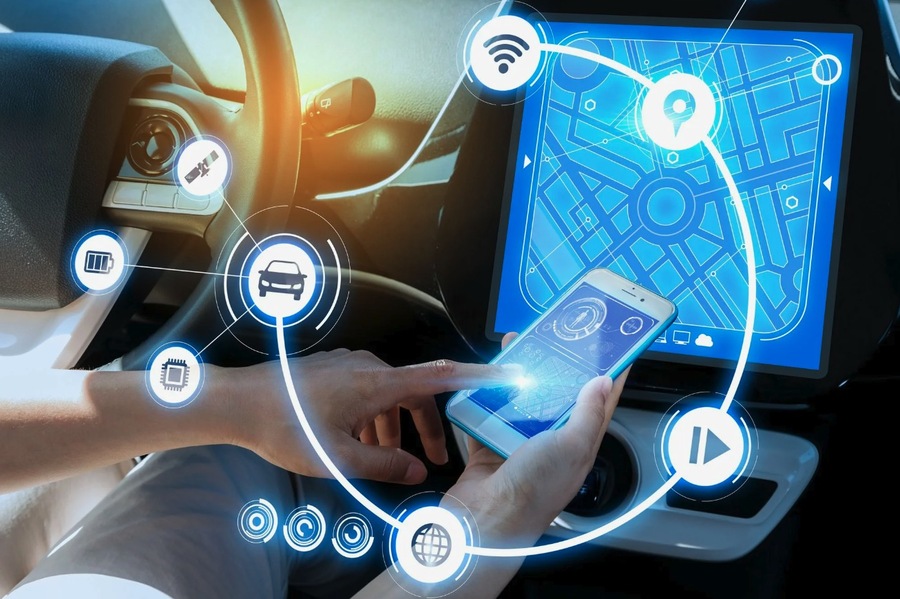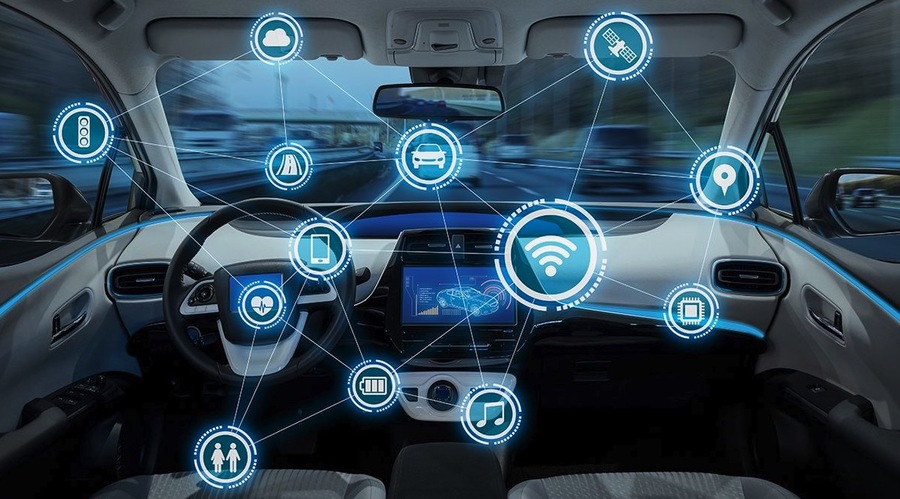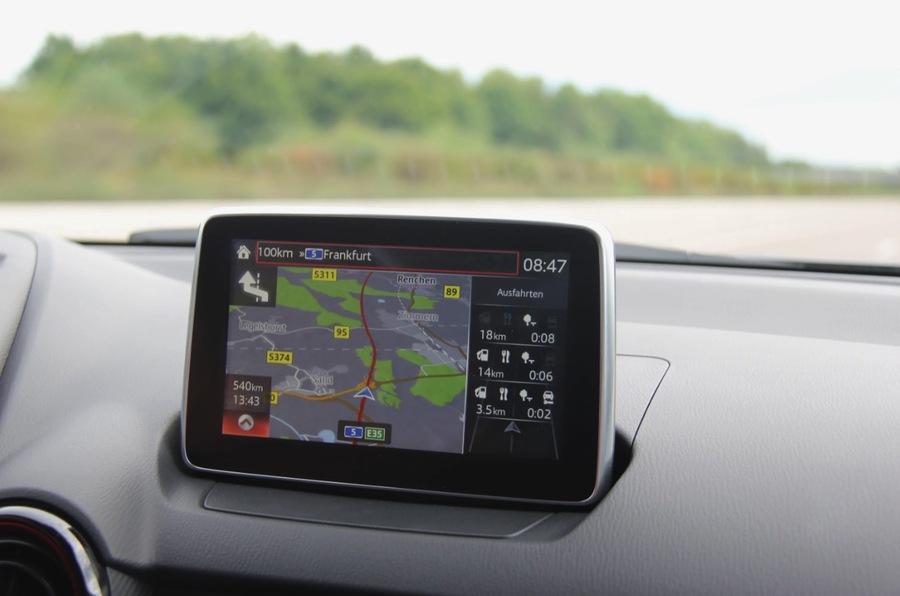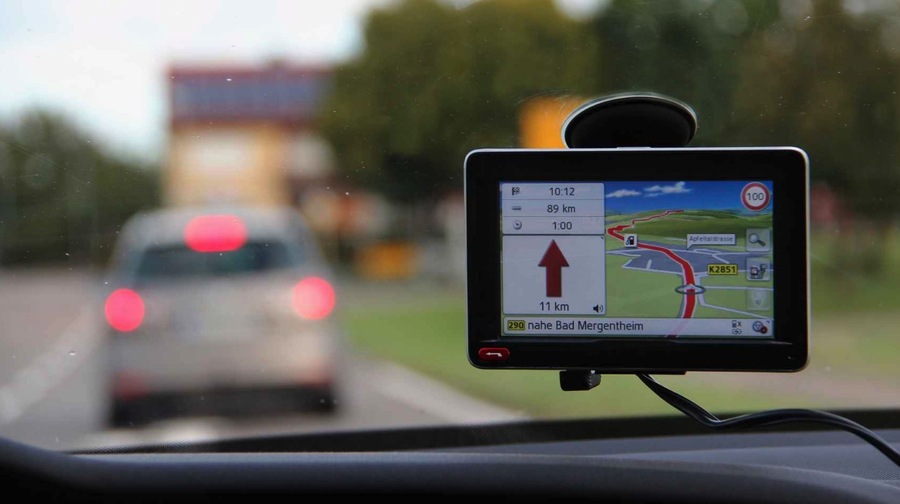The navigation system has become an indispensable feature in modern vehicles, greatly simplifying the task of navigating through various terrains and enabling real-time tracking and mapping. Today, it’s hard to imagine driving without a navigation system guiding the way. This article explores the history, components, functionality, types, and significance of car navigation systems. For those looking for an affordable way to experience this technology, consider cheap rent a car Dubai to find vehicles equipped with the latest navigation systems.
What is a Car Navigation System?
A car navigation system is an electronic device installed in a vehicle to provide route guidance and location tracking. It uses satellite signals, typically from GPS, to determine the vehicle’s position on a digital map and offers turn-by-turn directions to a specified destination. The system can display maps, route options, and traffic updates, making driving more convenient and safer. With advancements in technology, modern car navigation systems can integrate with smartphones, provide real-time traffic data, and even offer features like voice control and augmented reality. These systems are essential for both everyday commuters and long-distance travelers, enhancing the driving experience by reducing the stress and complexity of navigation.

History of Car Navigation Systems
Iter Avto (1932)
The Iter Avto, introduced in 1932 in Italy, is considered a prototype of modern navigation systems. This electromechanical device was mounted on the dashboard, and a paper map scroll was manually adjusted based on the car’s speed. It was a primitive yet innovative solution for its time, laying the groundwork for future advancements. The Iter Avto’s mechanism was simple but effective, showing how early inventors were already thinking about ways to assist drivers with navigation. Despite its limitations, the Iter Avto represented a significant step forward in automotive technology, demonstrating the potential for integrating navigational aids directly into vehicles.
DAIR (1966)
In 1966, General Motors tested the DAIR (Driver Aid, Information, and Routing) system. Although it didn’t reach commercial production, it was a significant step towards developing electronic navigation aids. DAIR used radio signals to communicate with a central control unit, providing drivers with directions and traffic information. This system highlighted the potential for using electronic communication to enhance driving. The DAIR project was an early attempt to create a connected vehicle system, long before the internet and GPS technology became mainstream. Its development underscored the growing recognition of the need for more sophisticated in-car navigation solutions.
Electro Gyrocator (1981)
In 1981, Honda introduced the first commercial navigation device for cars, the Electro Gyrocator. This device used a gas gyroscope to determine the car’s direction and speed, displaying the route on a scrolling map. It didn’t rely on satellite signals, making it unique for its time. The Electro Gyrocator was a significant milestone because it demonstrated that practical in-car navigation was possible without relying on external infrastructure. It paved the way for future innovations and showed that there was a market for such devices. The Electro Gyrocator’s introduction marked a pivotal moment in automotive history, showing the potential for integrating complex navigational tools within vehicles.
Etak Navigator (1984)
Developed by American engineer Nolan Bushnell in 1984, the Etak Navigator was a significant leap forward. It used digital maps stored on cassettes and a dead reckoning sensor to track the vehicle’s movement. This system was more accurate and user-friendly, paving the way for modern digital navigation systems. The Etak Navigator’s innovation lay in its use of digital storage for maps, a precursor to the sophisticated GPS systems we use today. By eliminating the need for constant updates from external sources, it provided a more seamless and reliable navigation experience. The Etak Navigator’s success demonstrated the feasibility and commercial potential of digital navigation, influencing subsequent developments in the field.
GPS (1995)
In 1995, the American satellite global navigation system, GPS (Global Positioning System), reached full functional readiness. This milestone marked the beginning of widespread adoption of satellite-based navigation systems in vehicles. GPS provides precise location data using a network of satellites, revolutionizing navigation technology. The accuracy and reliability of GPS transformed how people navigated, making it easier to find destinations and avoid getting lost. The availability of GPS technology in cars brought real-time navigation to the masses, greatly enhancing the convenience and safety of driving. This development marked the beginning of a new era in automotive navigation, where satellite technology became integral to vehicle systems.
Components of a Car Navigation System
A modern car navigation system consists of several key components:
– GPS Module (Receiver): Captures satellite signals to determine the vehicle’s location. The GPS receiver is crucial for providing accurate positioning data, which is essential for effective navigation.
– Antenna: Enhances signal reception from GPS satellites. A good antenna ensures that the system can receive signals even in challenging environments, such as urban areas with tall buildings.
– Route Computer: Processes GPS data to calculate routes and provide directions. The route computer uses algorithms to determine the best path to a destination, taking into account factors like distance, traffic, and road conditions.
– Control Panel: Allows the driver to input destinations and adjust settings. The control panel is the user interface for the navigation system, providing access to various features and functions.
– Display: Shows maps, routes, and other information visually. The display can range from simple monochrome screens to advanced touchscreens with high-resolution graphics.
– Gyroscope (Angular Rate Sensor): Measures the vehicle’s orientation and movement. The gyroscope helps improve the accuracy of the navigation system, especially when GPS signals are weak or unavailable.
– Hard Drive: Stores maps, software, and user data. A large hard drive allows the system to store detailed maps and additional data, enhancing its functionality.
– Speed/Track Segment Sensor: Monitors the vehicle’s speed and movement along the route. This sensor helps provide accurate real-time data on the vehicle’s progress and adjusts navigation instructions accordingly.

Functionality of Car Navigation Systems
Car navigation systems offer a range of functionalities to assist drivers:
– Turn-by-Turn Navigation: Provides step-by-step directions to a specified destination. This feature helps drivers follow the correct route without needing to constantly check a map.
– Real-Time Traffic Updates: Offers information on traffic conditions, accidents, and road closures. By providing up-to-date traffic information, the system can help drivers avoid delays and find alternative routes.
– Route Planning: Calculates the best route based on distance, time, and traffic conditions. Advanced route planning can also consider factors like fuel efficiency and toll costs.
– Voice Guidance: Provides spoken directions, allowing drivers to keep their eyes on the road. Voice guidance enhances safety by reducing the need for visual checks.
– Points of Interest (POI): Identifies and directs drivers to nearby amenities such as gas stations, restaurants, and hotels. POI databases help drivers find essential services quickly and easily.
– Speed Limit Alerts: Warns drivers of speed limits and potential speed traps. This feature helps promote safe driving by keeping drivers aware of speed regulations.
– Lane Guidance: Helps drivers stay in the correct lane for upcoming turns and exits. Lane guidance is particularly useful in complex road networks, reducing the likelihood of missed turns.
Types of Car Navigation Systems
Car navigation systems are categorized into two groups based on their usage:
Driver Navigation Systems
These systems are designed for individual use by drivers to navigate roads and find destinations. They provide route guidance, traffic updates, and other information to assist with personal travel. Driver navigation systems are typically installed in personal vehicles and are tailored to the needs of individual users, offering features like personalized route preferences and saved destinations.
Dispatch Navigation Systems
Used primarily in fleet management, these systems allow dispatchers to track and manage multiple vehicles. They provide real-time location data, route optimization, and communication tools to enhance fleet efficiency. Dispatch navigation systems are essential for businesses that operate large fleets of vehicles, such as delivery services and transportation companies, as they help improve operational efficiency and reduce costs.
Execution Types of Navigation Systems
Car navigation systems can also be classified by their execution type:
Mapping Systems
These systems display detailed maps and allow drivers to navigate visually. They show the vehicle’s location on the map and provide route guidance. Mapping systems are particularly useful for drivers who prefer a visual representation of their route and surroundings, offering detailed views of streets, landmarks, and geographic features.
Routing Systems
Routing systems focus on calculating and providing the most efficient route to a destination. They use algorithms to determine the best path based on various factors such as distance, time, and traffic conditions. Routing systems are designed to optimize travel efficiency, helping drivers reach their destinations quickly and economically by considering real-time traffic data and other variables.
Types of Global Navigation Satellite Systems (GNSS)
There are several types of global navigation satellite systems used in car navigation:
NAVSTAR (GPS)
Developed by the United States, GPS is the most widely used satellite navigation system. It provides accurate location data worldwide. GPS technology is integral to modern car navigation systems, offering reliable positioning information and supporting a wide range of navigation features.
GALILEO
Developed by the European Union, GALILEO offers global positioning services similar to GPS, with additional features for improved accuracy and reliability. GALILEO aims to provide enhanced positioning accuracy and availability, particularly in urban environments and areas with challenging signal conditions.
GLONASS
Developed by Russia, GLONASS is a global navigation satellite system that complements GPS, providing enhanced accuracy and coverage. GLONASS is often used in conjunction with GPS to improve the robustness and precision of positioning data, especially in areas where GPS signals may be weak or obstructed.
BEIDOU (COMPASS)
Developed by China, BEIDOU offers regional and global positioning services. It is becoming increasingly popular as an alternative to GPS. BEIDOU’s growing satellite network provides comprehensive coverage and high accuracy, making it a viable option for car navigation systems worldwide.

Characteristics of Car Navigation Systems
Several characteristics define the performance and functionality of car navigation
systems:
– Location Accuracy: The precision with which the system can determine the vehicle’s location. High accuracy is crucial for effective navigation, ensuring that the system provides reliable guidance.
– Memory Capacity: The amount of storage available for maps, software, and user data. Sufficient memory capacity allows the system to store detailed maps and additional information, enhancing its usability.
– Number of Channels: The number of satellite signals the receiver can process simultaneously. More channels typically mean better signal reception and improved accuracy.
– Processor Frequency: The speed at which the system can process data and update information. A high processor frequency ensures that the system can quickly calculate routes and respond to changes in traffic conditions.
– Design: The physical layout and user interface of the system, including the display and controls. A well-designed interface makes the system easy to use and understand.
– Additional Options: Extra features such as Bluetooth connectivity, voice recognition, and integration with other car systems. These options can enhance the functionality and convenience of the navigation system, making it a more versatile tool.
Importance of Car Navigation Systems
Car navigation systems are essential for several reasons:
1. Help in Orientation on the Roads: They provide accurate directions, making it easier for drivers to navigate unfamiliar areas. This reduces the stress and confusion associated with driving in new locations.
2. Obtaining Up-to-Date Information About the Road Situation: Real-time traffic updates help drivers avoid congestion and find alternative routes. This can save time and reduce frustration during commutes and long trips.
3. Improving Driving Safety: Navigation systems reduce the need for manual map reading, allowing drivers to focus on the road. This decreases the likelihood of accidents caused by distracted driving.
4. Optimizing Fleet Management: Dispatch navigation systems enhance fleet efficiency by providing real-time tracking and route optimization. This helps businesses manage their vehicles more effectively, reducing fuel costs and improving delivery times.
5. Responding to Emergency Situations: In emergencies, navigation systems can quickly route drivers to the nearest hospital or emergency services. This can be crucial in situations where every second counts, providing a vital tool for emergency response.
Conclusion
Car navigation systems have revolutionized the way we travel, providing unparalleled convenience, safety, and efficiency. From the early Iter Avto to modern GPS-based systems, the evolution of navigation technology has made it an indispensable tool for drivers worldwide. Whether for personal use or fleet management, the benefits of a reliable navigation system are clear, making driving easier, safer, and more enjoyable. As technology continues to advance, we can expect future navigation systems to become even more sophisticated, further enhancing our driving experiences.
I am an Administrative Assistant with eight years of experience working alongside the executive team of a Fortune 500 company.


